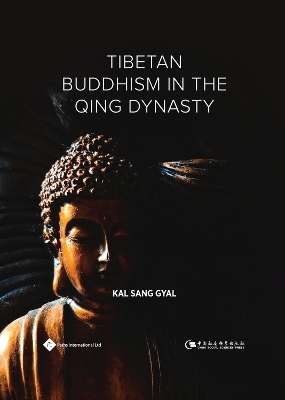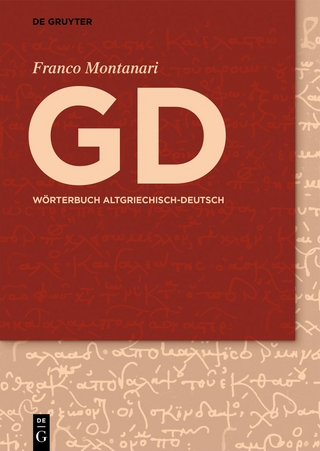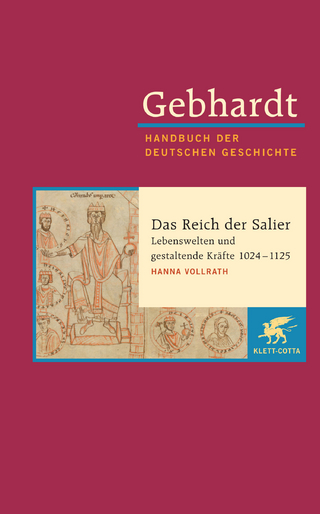
Tibetan Buddhism in the Qing Dynasty
Paths Publishing Group (Verlag)
978-1-84464-668-5 (ISBN)
Based on abundant Tibetan and Chinese materials, this book discusses the development and evolution of Tibetan Buddhism in China during the Qing Dynasty, and makes a detailed exposition of the system of Buddhist rituals, the temporal and religious administration system, study on living Buddha reincarnation and the system of drawing a lot from the golden urn, the system of conferment and rewards, system of certificates of lamas and the management mode of lamas of Tibetan Buddhism in the Qing Dynasty.
Many previous studies on the history of Qing Dynasty and Tibetan Buddhism use Chinese materials – however, the author here is a Tibetan scholar who references and quotes a large number of first-hand Tibetan materials, providing extensive and informative research. The book systematically combs the various factions of Tibetan Buddhism, and expounds the establishment, inheritance, religious ceremony and theoretical characteristics of each faction.
KalSang Gyal is currently a professor at the Institute of World Religions, Chinese Academy of Social Sciences, deputy director of the Center for Buddhist Studies, Chinese Academy of Social Sciences, and professor and doctoral supervisor at the University of Chinese Academy of Social Sciences. He is the author of The General History of Tibetan Buddhism in China, A Brief History of the Tibetan System of Government and Religion, Tibetan Buddhism: A Study of the Prehistory of the Nyingma School and Tantric Transmission, Studies on Tibetan Buddhism in the Qing Dynasty, The Ecology of Religion and Culture in Tibetan Area, Cultural Time and Space and Life of Faith, Religion in the Snow Region, Tantric Buddhism: The Mystical Culture of Tibetan Buddhism, Tibetan Buddhism and the Qinghai-Tibetan Plateau, Tibetan Religions, and other monographs. His main research interests include the history, sects, doctrinal thought, and religious culture of Tibetan Buddhism.
Introduction
Overview of Relevant Literatures
(1) A Study of Tibetan Buddhism Policy in the Qing Dynasty
(2) Study on Living Buddha Reincarnation and the System of Drawing a Lot from the Golden Urn
(3) Living Buddha Lineage in the Qing Dynasty
(4) The Rise of the Gelug Sect in the Hinterland and Mongolian Region
(5) Concluding Remarks
Volume I
Chapter I The Gelug Sect
Section 1 The Founding of the Gelug Sect
Section 2 The System of the Kadam Monastery
(1)Inheritance of the Kadam Tripa
(2)Inheritance of the Rongwu Monastery
Section 3 The System of the Drepung Monastery
(1)Inheritance of the Tar Monastery
(2)Inheritance of the Gonlung Monastery
(3)Inheritance of the Chuzang Monastery
(4) Inheritance of the Serkog Monastery
(5)Inheritance of the Labrang Monastery
(6)Inheritance of the Lamo Deqen Monastery
Section 4 The System of the Sera Monastery
(1)Inheritance of the Garze Monastery
(2)Inheritance of the Chone Monastery
Section 5 The Tantric College in Lhasa
(1)Inheritance of the Tantric Teachings of Segyu
(2)Inheritance of the Lower Tantric College
(3)Inheritance of the Upper Tantric College
(4)Inheritance of the Qamdo Qambaling Monastery
(5)Inheritance of the Sumtseling Monastery
(6)Inheritance of the Jakhyung Monastery
Section 6 Ensa Oral Lineage
(1) Oral Lineage in the Period of the Kadam Monastery
(2)The Ensa Oral Lineage in the Period of Retreats
(3)Inheritance of the Tashilhungpo Monastery
Chapter II Other Sects
Section 1 Nyingma Sect
(1)The Distant Exotic Kama Lineage
(2)The Close Terma Lineage
Section 2 Kagyu Sect
(1)Karma Kagyu Sect
(2)Taglung Kagyu Sect
(3)Drigung Kagyu Sect
Section 3 Sagya Sect
Section 4 Jonang Sect
Chapter III Classical Documents
Section 1 Tibetan 'Tripitaka'
(1) 'Kangyur' and 'Tengyur'
(2) Tibetan Version of the 'Tripitaka'
Section 2 Mongolian and Manchu Versions of the 'Tripitaka'
(1) Mongolian Version of 'Tripitaka'
(2) Manchu Version of 'Tripitaka'
(3) Other Scripture Literatures
Section 3 Other Scriptures
(1)Other Scriptures of the Gelug Sect
(2)Other Scriptures of the Nyingma Sect
(3)Other Scriptures of the Kagyu Sect
(4) Other Scriptures of the Sakya Sect
(5)Tibetan Scripture Woodblocks of the Derge Printing House
Section 4 Historical Books and Biographies of Lamas
(1) Historical Books
(2)Autobiographies of Eminent Monks
Section 5 Works of Various Sects
(1)Gelug Senior Monks and Their Masterpieces
(2)Senior Monks of the Nyingma Sect and Their Works
(3)Senior Monks of the Kargyu Sect and Their Works
(4)Senior Monks of the Sagya Sect and Their Works
Chapter IV Dogma and Doctrine
Section 1 Core Dogma of Various Sects
(1)Core Dogma of the Gelug Sect
(2)Core Dogma of the Nyingma Sect
(3)Core Dogma of the Kagyu Sect
(4) Core Dogma of the Sagya Sect
(5) Core Dogma of the Jonang Sect
Section 2 Studies of Buddhist Sects and their Inheritance System
Section 3 Tantras
(1)Conceptual Explanation of Tantras
(2)Definition of New and Old Tantras
(3) Differentiation and Analysis of Tantra Hierarch
(4) Four Classes or Six Classes of Tantra
Section 4 Logic
Chapter V The System of Buddhist Rituals
Section 1 Monastic Discipline
(1)Monk Positions
(2)Buddhist Commandments
Section 2 Khenpo System
Section 3 Monastery Education
(1)Teaching Materials
(2) Teaching
(3) Academic Titles
Section 4 Prayer Festival
(1)Monastery Dharma Events
(2)Grand Prayer Festival in Lhas
Section 5 Religious Festivals
(1)Tibetan New Year
(2)Butter Lamp Festival
(3)Saga Dawa Festival
(4)Shoton Festival
Volume II
Chapter VI The Temporal and Religious Administration System
Section 1 Kublai Khan and Imperial Mentor of the Yuan Dynasty
Section 2 Byangchu Gyaltsen and the Phagdru Regime
Section 3 Gelug Sect and Mongol Khan
Section 4 The Galoon Government Official and Local Political and Religious Administration
Section 5 Tibetan Governor and the Political Situation in Tibet
Section 6 Qing High Commissioner in Tibet and the Kashag Government
(1) High Commissioners Stationed in Tibet
(2) Kashag Government
Section 7 Regent and the Dalai Lama
Chapter VII The Living Buddha Reincarnation System
Section 1 Black Hat Lineage of Karma Kagyu Sect
Section 2 Dalai Lama Lineage
Section 3 Panchen Erdeni Lineage
Section 4 Jebtsun Penpa Hutuktu Lineage
Section 5 National Preceptor Changkya Lineage
Section 6 Four Major Ling's in Lhasa and Their Living Buddha Lineages
(1) Tengye Ling
(2) Tsomon Ling
(3) Kunde Ling
(4) Drib Tsemchok Ling
Section 7 The Lineages of Eight Major Hutuktus in Beijing
Section 8 Hutuktus on File in the Qing Dynasty
Chapter VIII The System of Drawing Lots from a Golden Urn
Section 1 Establishment of the System of Drawing Lots from a Golden Urn
Section 2 Lot Drawing Ceremony for Four Major Living Buddhas in the Qing Dynasty
(1) Reincarnated Soul Boy of the Dalai Lama
(2) Reincarnated Soul Boy of the Panchen Erdeni
(3) Reincarnated Soul Boy of Jebtsun Penpa
(4) Reincarnated Soul Boy of Living Buddha Changkya
Section 3 Lot Drawing Ceremony for the Reincarnated Soul Boy of Other Great Living Buddhas
Chapter IX The System of Conferment and Rewards
Section 1 Titles of the Dalai Lama
Section 2 Titles of the Panchen Erdeni
Section 4 Titles of National Preceptor Changkya
Section 5 Titles of Other Living Buddhas
Chapter X Management over Monasteries
Section 1 Building and Repair of Monasteries
(1) Tibetan Buddhist Monasteries in Beijing
(2) No. 1 Royal Monastery - Yonghegong Lamasery
(3) Monasteries of the Esoteric Sect
(4) Monasteries of Tibetan Buddhism in Rehe
(5) Monasteries of Tibetan Buddhism at Mount Wutai
(6) Monasteries in Dolon Nor
(7) Monasteries in Guihua
(8) Qingning Monastery in Mobei Kulun
(9) Puhua Temple in Ili of Xinjiang
(10) Shisheng and Other Temples in Liaoning
(11) Guangren Temple in Xi'an
(12) Guangfa Temple in Jinchuan
Section 2 Limits on the Size of Monasteries
Chapter XI Organization of Lamas
Section 1 Priesthood and Title
(1)Dugang and Senggang
(2)Lamas in Beijing
(3)Lamas in Tibet and Western Region and Nomadic Lamas
Section 2 System of Certificates of Lamas
(1)Management of Certificated Lamas
(2)Treatment for Certificated Lamas
Section 3 Prohibitions on Lamas
Section 4 Management over Lamas in U-Tsang
Section 5 Limitation on Mongolians' Making Tea for Tibetan Lamas in Tibet
Bibliographies
Tibetan Bibliographies
Chinese Bibliographies
Postscript
| Erscheinungsdatum | 01.07.2021 |
|---|---|
| Sprache | englisch |
| Maße | 170 x 241 mm |
| Gewicht | 333 g |
| Themenwelt | Geschichte ► Allgemeine Geschichte ► Altertum / Antike |
| Geisteswissenschaften ► Geschichte ► Regional- / Ländergeschichte | |
| Geisteswissenschaften ► Religion / Theologie ► Buddhismus | |
| Geisteswissenschaften ► Religion / Theologie ► Weitere Religionen | |
| ISBN-10 | 1-84464-668-8 / 1844646688 |
| ISBN-13 | 978-1-84464-668-5 / 9781844646685 |
| Zustand | Neuware |
| Haben Sie eine Frage zum Produkt? |
aus dem Bereich


